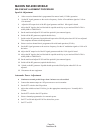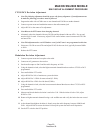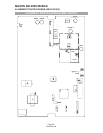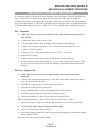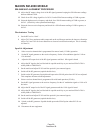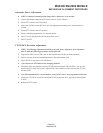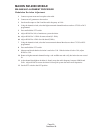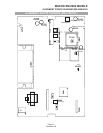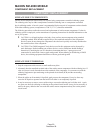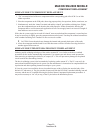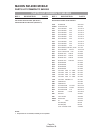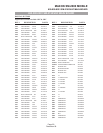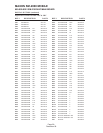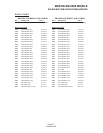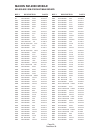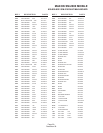
COMPONENT REPLACEMENT
SURFACE MOUNT COMPONENTS
Surface mount components should always be replaced using a temperature controlled soldering system.
The soldering tools may be either a temperature controlled soldering iron or a temperature controlled
hot-air soldering station. A hot-air system is recommended for the removal of components on these boards.
With either soldering system, a temperature of 700° F (371° C) should be maintained.
The following procedures outline the removal and replacement of surface mount components. If a hot-air
soldering system is employed, see the manufacturer’s operating instructions for detailed information on the
use of your system.
•
CAUTION: Avoid applying heat to the body of any surface mount component using standard
soldering methods. Heat should be applied only to the metalized terminals of the components.
Hot-air systems do not damage the components since the heat is quickly and evenly distributed to
the external surface of the component.
•
CAUTION: The CMOS Integrated Circuit devices used in this equipment can be destroyed by
static discharges. Before handling one of these devices, service technicians should discharge
themselves by touching the case of a bench test instrument that has a 3-prong power cord
connected to an outlet with a known good earth ground. When soldering or desoldering a CMOS
device, the soldering equipment should have a known good earth ground.
SURFACE MOUNT REMOVAL
1. Grip the component with tweezers or small needle nose pliers.
2. Alternately heat the metalized terminal ends of the surface mount component with the soldering iron. If
a hot-air system is used, direct the heat to the terminals of the component. Use extreme care with the
soldering equipment to prevent damage to the printed circuit board (PCB) and the surrounding
components.
3. When the solder on all terminals is liquefied, gently remove the component. Excessive force may
cause the PCB pads to separate from the board if all solder is not completely liquefied.
4. It may be necessary to remove excess solder using a vacuum de-soldering tool or Solder wick . Again,
use great care when de-soldering or soldering on the printed circuit boards. It may also be necessary to
remove the epoxy adhesive that was under the surface mount component and any flux on the printed
circuit board.
MAXON SM-2000 MOBILE
COMPONENT REPLACEMENT
Page-32-
December 98



